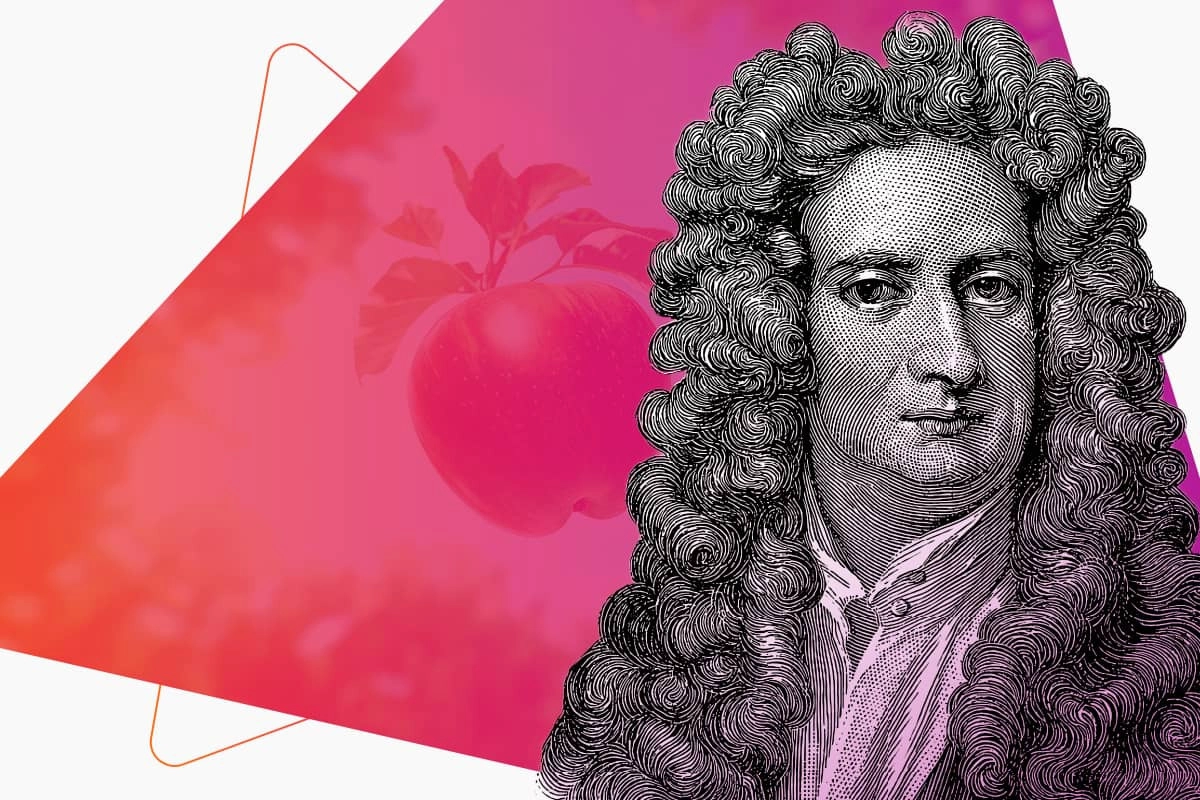
What is in this article?
Bir elma bilim tarihini ne kadar etkileyebilir? Şüphesiz, bahsi geçen elma, düşüşü sırasında Isaac Newton tarafından gözlemlendiği için etkisi kilometre taşı niteliğinde olabilecek kadar büyük olmuştur.
Tarihin en etkili bilim insanlarından biri olarak görülen Isaac Newton, astronomi ve fizik için bir dönüm noktası olarak kabul edilmiştir. Evrensel kütleçekim yasasını ve üç hareket yasasını ortaya koymuş olan Newton, modern bilimin iki önemli aracı olan gözlem ve deney yöntemleriyle başarıya ulaşmış ve bilim devriminin mimarı olarak kabul edilmiştir.
Isaac Newton'un hayatı, buluşları, bilim anlayışı, eserleri ve annesi çiftçi olmasını isterken onu büyük bir bilim insanına dönüştüren keşiflerini blog yazımızda bulabilirsiniz.
Isaac Newton Kimdir?
Isaac Newton, 25 Aralık 1642 tarihinde İngiltere’nin Grantham şehri yakınlarındaki Woolsthorpe’ta erken doğumla dünyaya gelmiştir ve çok zayıf doğması nedeniyle yaşamayacağı bile düşünülmüştür.
Çiftçi olan babasını doğumundan 3 ay önce kaybetmiş olan Newton, annesi ikinci kez evlilik yaptığı için anneannesiyle birlikte yaşamıştır. Bu durum onda travmatik etkiler bırakmıştır.
12 yaşında Grantham’daki King School’da eğitim hayatına başlamış olan Newton, annesinin baskısıyla okulu bırakmış ve aile işlerine yönelmek zorunda kalmıştır.
Annesi Newton'ın daima çiftçilik yapmasını istemiş ancak bu meslek ona hiçbir zaman çekici gelmemiştir. Annesi onun çiftçilikle ilgilendiğini zannederken o gökyüzünü ve yıldızları incelemiş, gözlemler yapmış, kitaplar okumuş ve notlar almıştır.
Gratham’daki eski okul müdürünün de çabalarıyla Newton’ın okula dönmesi konusunda annesinin ikna edilmesinin ardından Newton, oradaki eğitimini tamamlayıp 1661 tarihinden itibaren Cambridge Trinity Koleji’nde eğitimine devam etmiştir. Üstelik burada Isaac Barrow isminde önemli bir matematik profesöründen dersler alan Newton, yeteneğinin Barrow tarafından fark edilmesinin ardından öğretim üyesi olma ve daha 26 yaşındayken Lucasian Matematik Kürsüsü’ne seçilme fırsatını yakalamıştır. Öyle ki, Henry Lucas tarafından kurulan matematik kürsüsünün başına geçen ilk isim olan Barrow, kürsüsünü Newton’a bırakmak için görevinden istifa etmiştir.
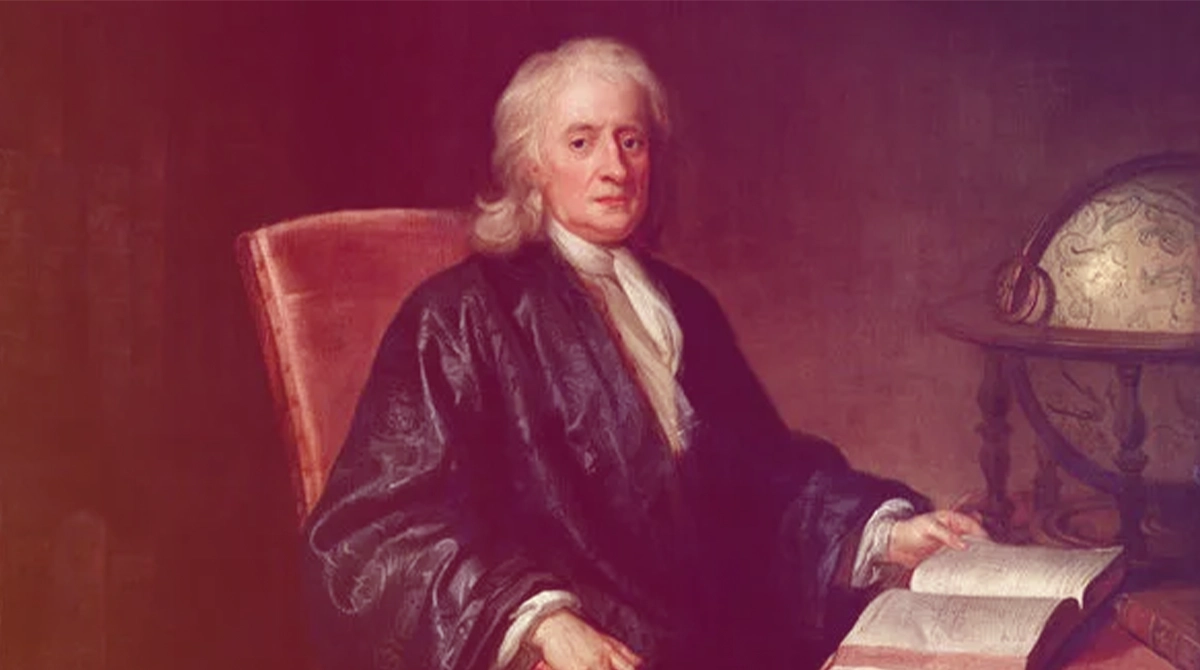 1665 tarihindeki, 2 yıl süren ve Avrupa’nın önemli bir kısmını etkileyen büyük veba salgını ise Newton için adeta bir dönüm noktası olmuştur. Üniversite, veba salgınından dolayı kapanmış, Newton Cambridge’den uzakta yaşamak durumunda kalmış ve annesinin Woolsthorpe’taki çiftliğine çekilmiştir.
1665 tarihindeki, 2 yıl süren ve Avrupa’nın önemli bir kısmını etkileyen büyük veba salgını ise Newton için adeta bir dönüm noktası olmuştur. Üniversite, veba salgınından dolayı kapanmış, Newton Cambridge’den uzakta yaşamak durumunda kalmış ve annesinin Woolsthorpe’taki çiftliğine çekilmiştir.
Bugün mihenk taşı olan buluşlarının pek çoğu bu zamanda gerçekleşmiştir. Newton burada, zamanının büyük bir kısmını gözlem ve deney yaparak geçirerek evrensel çekim yasasını keşfetmiş, ışığın doğasını ilk kez doğru şekilde açıklamış ve evrensel mekaniğin ilkelerini geliştirmiştir.
Üniversitenin tekrar açıldığı 1667 yılında Cambridge’e geri dönen Newton, iki yılın ardından matematik profesörü olmuştur. 30 yılını Cambridge’de geçiren Newton, bu süreçte ilk olarak mekanik ve kozmolojinin sorunlarını tartıştığı en önemli eseri Philosophiae Naturalis Principia Mathematica’yı (Doğa Felsefesinin Matematik İlkeleri) 1687 tarihinde yayımlamıştır.
1704 yılına gelindiğinde Newton, beyaz görünen gün ışığının aslında çok sayıda rengin karışımından meydana geldiğini ortaya koyan buluşunun yer aldığı Opticks (Optik) adlı eserini yayımlamıştır. Bu eser de onun ikinci önemli yapıtı olarak kabul edilmiş ve her ikisi de bilimin gelişimini doğrudan etkilemiştir.
Newton kanunu ile bilimin çalışma disiplinini ve dolayısıyla dünyayı değiştiren bilim insanı, hayatının son dönemlerinde simya ve teoloji konularıyla da ilgilenmiştir. Newton, belki de başka hiçbir bilim insanının yaşarken sahip olamadığı bir ünle 1727 yılında yaşama gözlerini yummuştur.
Isaac Newton'un Onu “Tarihin En Büyük Bilim İnsanı” Yapan Keşifleri
Bilimkurgu edebiyatının en büyük ustalarından biri olarak kabul edilen yazar Isaac Asimov, bir kitabında Newton’dan “Tarihin en büyük bilim insanı” olarak bahsetmiştir. Newton denildiğinde ilk akla gelen buluşu olan kütleçekim yasası, bilim tarihinde bir devrim olarak kabul edilmiştir.
Çiftlik evinde yaşadığı dönemde zamanının büyük kısmını gözlem ve deneye ayıran Newton, dalından yere düşen elmanın bu düşüşünü gözlemlemesinin ardından, onu evrensel kütleçekim yasasına ulaştıran düşünceler bütününde ilk adımı atmıştır. Efsaneler, Newton'un başına bir elmanın düşmesiyle “Eureka” (Eski Yunancada “Buldum”) anının yaşandığını ve bu keşif için ilk adımın atıldığını tasvir etse de bununla ilgili kesin bir kanıt bulunamamıştır.
Kendisinden önce her ne kadar Joannes Kepler, salt matematiksel anlamda gezegenlerin eliptik hareketlerini açıklamış olsa da ondan gezegenlerin yörüngede kalma sebeplerine dair bir açıklama gelmemiştir. Bu fikirden yola çıkan Newton, Güneş ve gezegenler arasında bir çekim kuvveti olması gerektiğine odaklanmıştır. Böylece kütleçekimin matematiksel ifadesini vermiştir.
Kütleçekimini ilk defa 1665 yılında düşünen Newton, Principia kitabını 1687 yılında yayımlamıştır. Newton bu buluşlarında Galileo Galilei ve Kepler’den etkilenmiş ve onların yanıtsız kalan sorularına cevap bulmuştur.
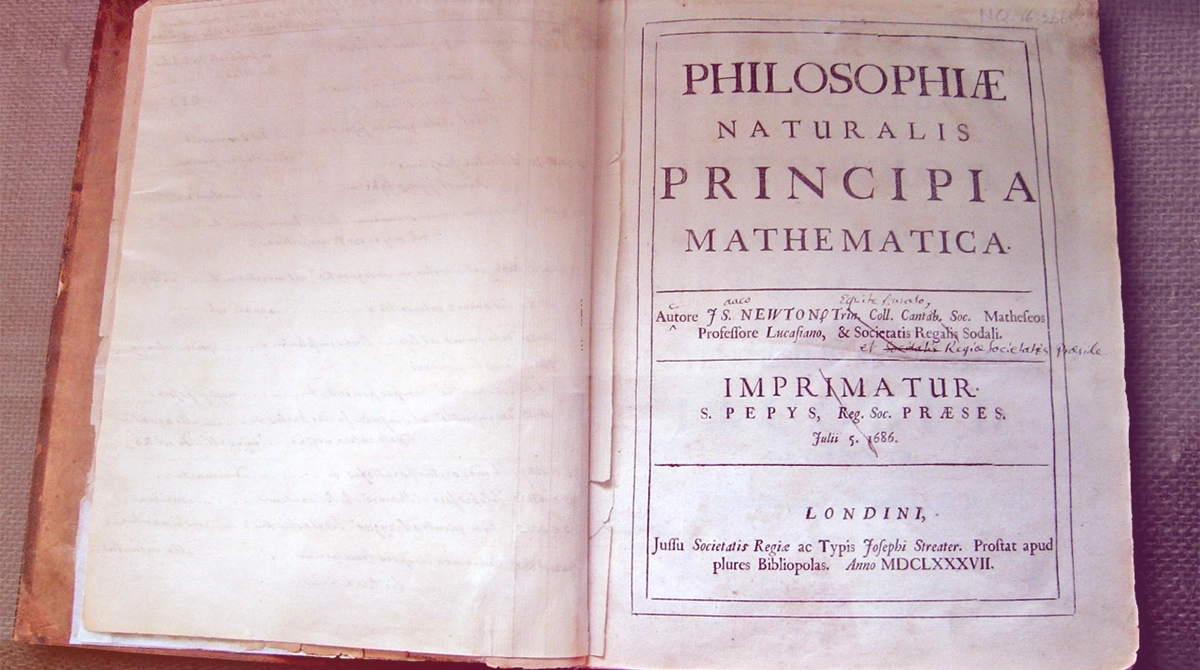
Çiftlik evinin bir odasını karanlık odaya dönüştüren Newton, güneş ışığı üzerinde yaptığı deneylerle ilk defa ışığın doğasını doğru şekilde açıklamayı başarmıştır. Beyaz ışığın aslında ne olduğunu açıklayan Newton, tarihte ilk defa gökkuşağını da bilimsel bir açıklamaya kavuşturmuştur. Beyaz ışığı mercek ve prizmalar kullanarak tayfına ayıran bilim insanı, bu ışığın farklı renklerden oluştuğu bulgusunu da ortaya koymuştur.
Bilim dünyasının ilgisini üzerine çekmesini sağlayan bir diğer buluşu ise aynalı teleskoptur. Newton, mercekli teleskopların kusurlar yarattığını fark edip yansıtmalı yani aynalı teleskop geliştirmiştir. Newton'un mekanik kanunları ve kurduğu klasik mekanik de nihai fizik kuramı haline gelmiştir ve günümüzde de mühendislikte kullanılan temel kuram olmuştur.
Newton'un çalışmalarını çok daha özel kılan şey; bilimin tek tek olgularının anlaşılması yerine kuramsallaşmasına sağladığı katkılar olmuştur. Newton, ilk bakışta aralarında açık bir ilişki bulunmayan, elmanın yere düşmesi ve Ay’ın yer etrafında dönmesi gibi olguları bir kavram çerçevesinde toplayıp açıklamıştır. Tüm bunlar, Newton'un çalışma prensibini ortaya koymuştur.
Newton Hareket Yasaları
Ünlü bilim insanının bilime en büyük katkısı mekanik alanında olmuştur. Kepler yasaları ile merkezkaç kuvveti yasasını beraber ele alarak kütleçekim yasasını ortaya koyan Newton'un hareket yasaları; bir cismin üzerine etki eden kuvvetlerle cismin yaptığı hareket arasındaki ilişkileri açıklamıştır.
Newton hareket yasaları, eylemsizlik ilkesi, etki ile tepkinin eşitliği ve kuvvetin kütle ile ivmenin çarpımına eşitliğini açıklayan üç yasadan oluşmuştur. Üstelik bu yasalar; fiziğin yanı sıra evrenin de bir düzende ve deterministik olduğu sonucuna varılması ile felsefeye de etki etmiştir.
Newton hareket yasaları temelde şu şekilde açıklanmıştır:
- Tüm cisimler bir kuvvet etkisi tarafından durumunu değiştirmeye zorlanmadıkça düzgün doğrusal hareketini veya durağanlığını korur.
- Bir cismin momentumundaki değişim, cisim üzerine uygulanan itme ile orantılıdır ve itmenin uygulandığı düz doğru boyunca meydana gelir.
- Her kuvvete karşılık, her zaman eşit ve ters bir tepki kuvveti vardır veya iki cismin birbirine uyguladığı kuvvetler her zaman eşit ve zıt yönelimlidirler.
İlginizi Çekebilir

Potansiyel Enerji Nedir? Çeşitleri Nelerdir?
Çalışma Masalarında Görmeye Alışkın Olduğumuz Newton'un Beşiği Nedir?
 Şimdilerde ofis masalarını süsleyen, yan yana asılı duran 5 topun bir tanesinin çekilip bırakılmasıyla hareket etmeye başlaması esasına dayanan dekoratif objeler, Newton’ın önemli fikirsel buluşunun sonucunda ortaya çıkmıştır.
Şimdilerde ofis masalarını süsleyen, yan yana asılı duran 5 topun bir tanesinin çekilip bırakılmasıyla hareket etmeye başlaması esasına dayanan dekoratif objeler, Newton’ın önemli fikirsel buluşunun sonucunda ortaya çıkmıştır.
Her ne kadar bu obje Newton tarafından icat edilmemiş olsa da çıkış noktası Newton kanunu olduğu için isim babası da Newton olmuştur.
Çoklu sarkaç olan Newton’ın beşiği, momentumun korunumu yasasını inceleyip basit sarkaçların yan yana bağlanmasıyla oluşmuştur.
Bu sarkaç, aynı hizadaki asılı duran beş toptan oluşur ve ilk top havaya kaldırılınca yüklendiği enerjiyle ikinci topa değip momentum transferi gerçekleşmesi ve bu şekilde son topa kadar momentumun iletilip son topu da kaldırması esasına dayanır. Bu hareket sonucu ilk ve son topların havaya kalkma hareketinin sürekli devam etmesini göstermiştir.

Kinetik Enerji Nedir? Çeşitleri Nelerdir?
Newton Raphson Metodu Nedir?
Adını Isaac Newton ve Joseph Raphson’dan alan bu yöntem, sayısal analizde, bir kök bulma algoritması olarak ortaya çıkmıştır. Newton Raphson Metodu ile gerçel değerli fonksiyonların köklerine daha iyi yaklaşımlar üretilmesine imkan sağlanmıştır.
Isaac Newton'un Dikkat Çeken Diğer Buluşları
Newton'un bilim tarihine etki eden daha pek çok buluşu olmuştur. Bunlardan bazıları calculus, parçacık kuramı gibi buluşlardır.
Calculus
O zamana kadar çözülememiş çok sayıda problemi keşfettiği Calculus ile çözmüş olan Newton, bilim dünyasını karıştıran bir tartışmanın da aktörü olmuştur.
Limit, türev ve integral hesabına dayalı bu keşif aynı zamanlarda Leibnitz tarafından da keşfedilmiştir. Uzun süre yöntemin önce kim tarafından bulunduğu tartışılmış ancak günümüzde iki bilim insanının da ayrı ayrı bu hesabı geliştirdiği kabul edilmiştir.
Işığın Parçacık Kuramı
Işığın, dalga olduğuna yönelik kuramın gündemde olduğu dönemde Newton, geometrik doğası gereği parçacıklardan oluştuğunu iddia etmiştir.
Seri halinde deneyler gerçekleştiren Newton, son deneyinde ışığın parçacıklardan oluştuğunu söyleyerek çalışmalarını sonuçlandırmıştır.
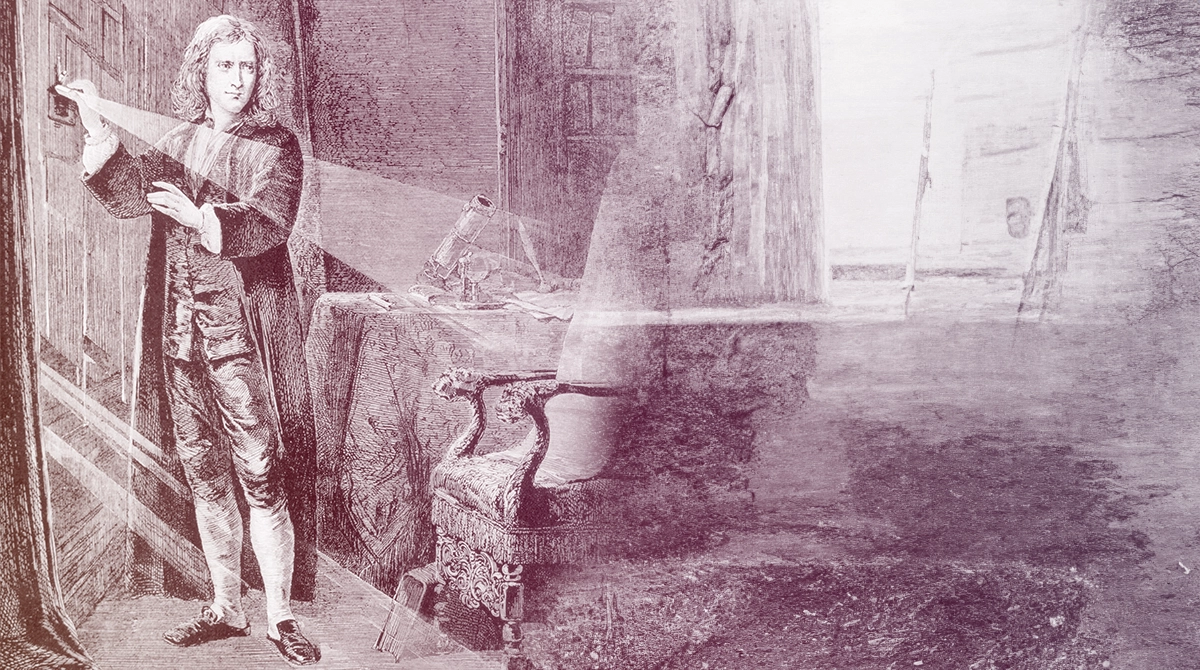
Isaac Newton'un Çığır Açan Eserleri
Newton'un en önemli eseri Philosophiæ Naturalis Principia Mathematica (Doğa Felsefesinin Matematiksel İlkeleri) olmuştur. Üç ciltlik bir çalışma olan bu eserin basım masraflarını ise bir gökbilimci olan ve Halley kuyruklu yıldızına ismi verilen Edmond Halley kendi cebinden karşılamıştır.
Newton kanunu açısından bir başyapıt olan bu eserde Newton hareket kanunları ve kütleçekim kanunu yer almıştır. Bilim insanı bu kitapta diferansiyel hesap yerine geometrik ispatlar üzerinden çalışmıştır.
Newton, bu eserinde cisimlerin kütleleriyle doğru orantılı ve mesafeleriyle ters orantılı olarak birbirlerini çektiklerine yönelik kuramını açıklamıştır.
Kitabın bir diğer önemli özelliği ise Newton’ın burada Galileo’dan övgüyle söz etmesi ve Kepler kanunlarına ispat getirmesi olmuştur. Kitapta en iyi gemi tasarımı için öneriler de yer almıştır. Özellikle dalga hareketlerinin matematiksel anlamda incelenmesi bilim dünyasında dikkat çekmiştir.
Newton'un ikinci önemli eseri olan Opticks, Latince basılan Principia’nın aksine İngilizce basılmıştır. Newton bu eserinde, beyaz ışığın tayfın renklerine ayrılması, gökkuşağının renkleri, yansıma ve kırınım hesapları, merceklerle görüntü oluşumu, yansıma teleskobunun yapımı ve gözün çalışması gibi konulardan bahsetmiştir. Ancak bu eserde optikle alakası olmayacak şekilde; metabolizma, Dünyanın yaratılışı ve Nuh tufanı gibi konular da işlenmiştir.
Isaac Newton Hakkında Herkesin Bilmediği İlginç Detaylar
Isaac Newton'un; astronomi, fizik ve biyoloji gibi alanlardaki çalışmalarıyla 17. yüzyıl İngiltere’sinin Rönesans Adamı olarak bilinen bilim insanı Robert Hooke’a yazdığı mektubunda kullandığı bir ifade, bazıları için hayat mottosu olmuştur.
Newton, Hooke’a yazdığı o mektubunda “Diğerlerinden daha uzakları görüyorsam, bu devlerin omzunda yükselmem sayesindedir.” sözlerine yer vermiştir. Yıllar boyunca pek çokları için ilham kaynağı olan bu söz, Google Akademik Türkçe arama motorunun ana sayfasında da kısaltılmış haliyle “Devlerin omzunda yüksel” şeklinde kendine yer bulmuştur.
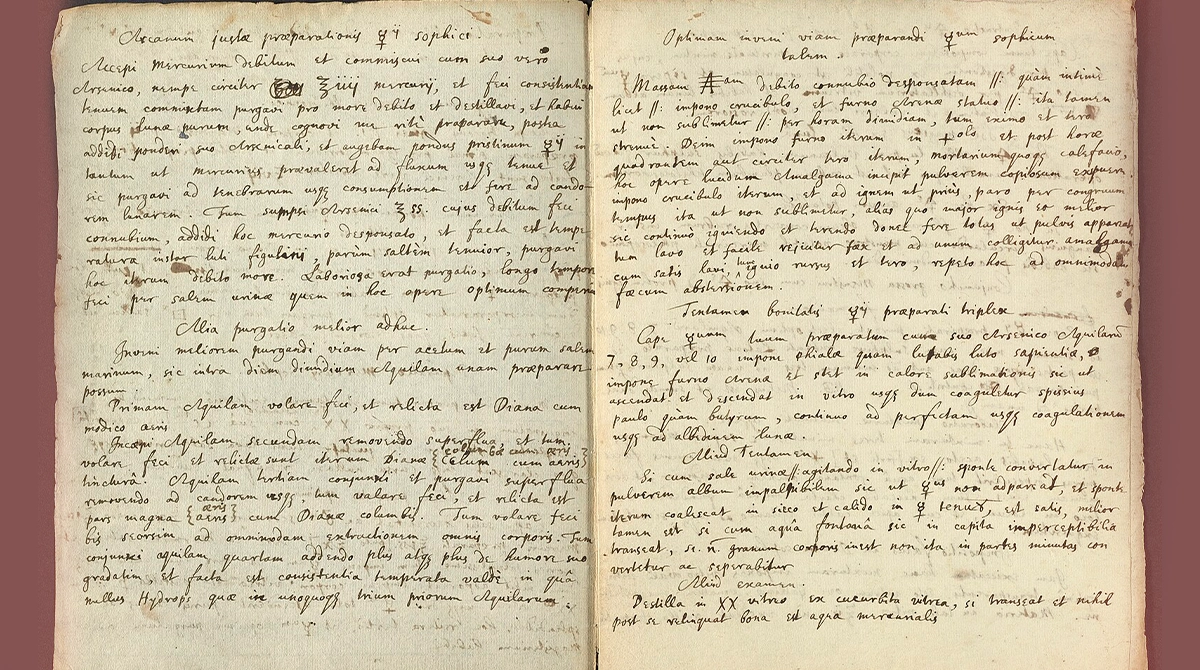
Simya ilmine göre dokunduğu herhangi bir metali altına dönüştüreceğine inanılan Felsefe Taşı da Newton'un ilgi alanları arasında yer almıştır.
Kurşunu altına çevirmek için yıllar boyunca çalışmalar yapmış olan Newton'un, yeniden keşfedilen bir el yazmasındaki bilgileri kullanmış olabileceği düşünülmüştür.
Newton’ın el yazmasında; bazı gizemli malzemelerin belirli oranlarda bir araya getirilmesiyle bir metalin altına dönüştürülebileceği belirtilmiştir.
İçinde bir tarif olduğu belirtilen bu el yazmasında Felsefe Taşı’nın ana malzemesi olarak kabul edilen sophick civasının yapımının şifreli olarak anlatıldığı düşünülmüştür. Ancak Newton'un bu malzemeyi yapabildiğine dair kesin bir bilgi bulunamamıştır.
Peki ya sizce, dünyaya geldiğinde yaşamasına neredeyse mucize gözüyle bakılan ve yıllar sonra buluşlarıyla bilime ışık tutan Newton hiç doğmasaydı, bugün yaşadığımız dünya nasıl olurdu? Görüşlerinizi bizimle yorumlar alanında paylaşabilirsiniz.

 Online Services
Online Services Application Inquiry
Application Inquiry Pay Assurance Fee
Pay Assurance Fee Query Installation Number
Query Installation Number Compensation Fee Inquiry
Compensation Fee Inquiry Automatic Payment Order Inquiry
Automatic Payment Order Inquiry Partnership
Partnership




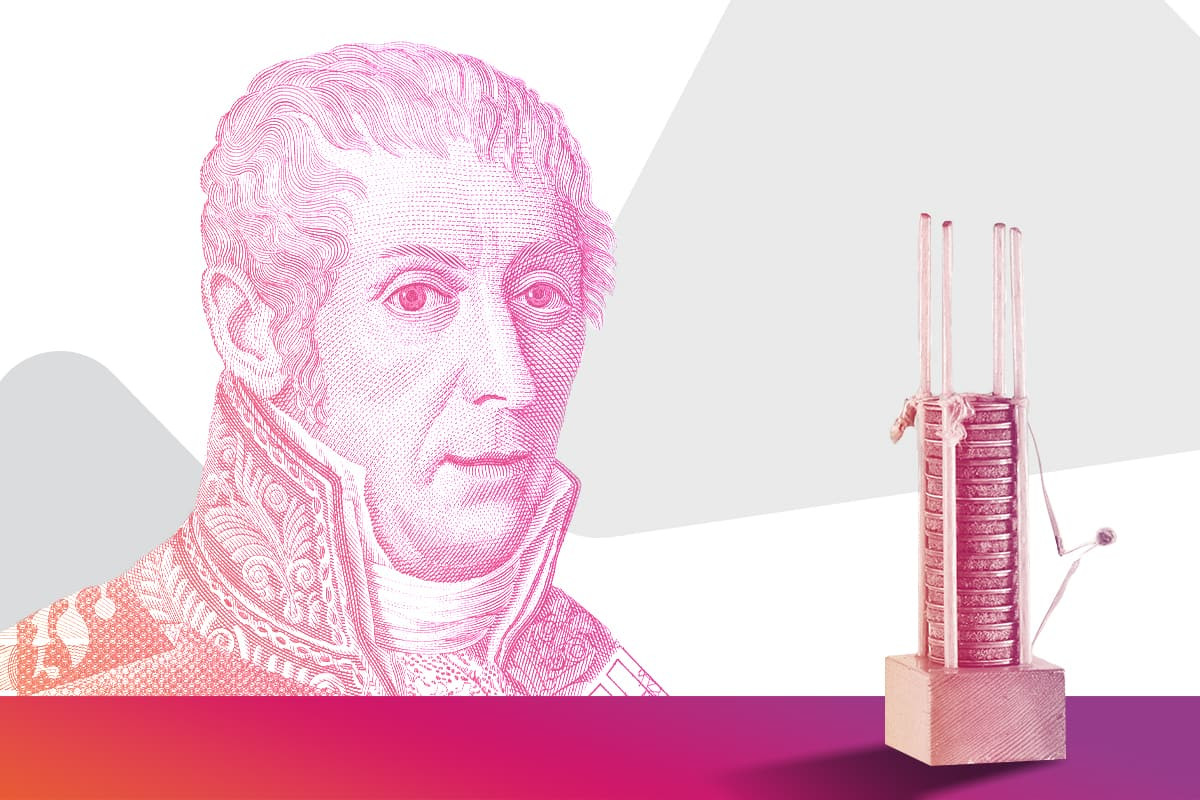
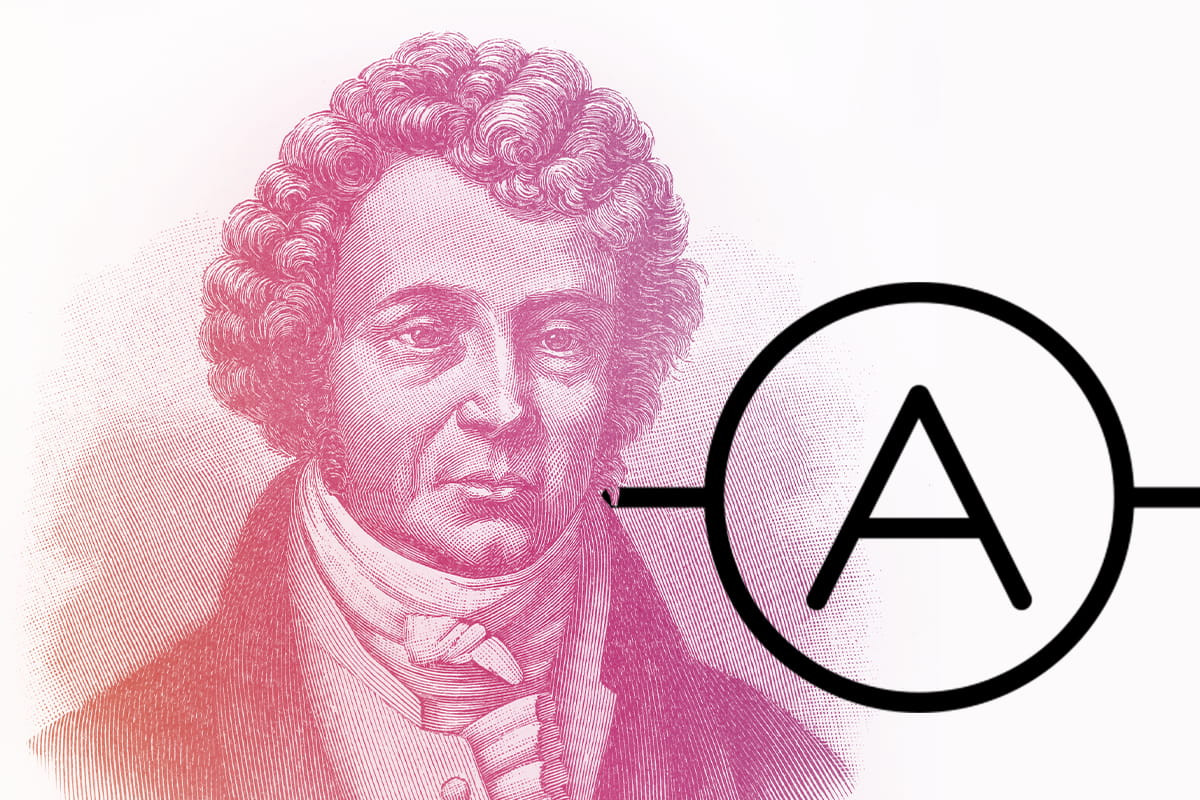
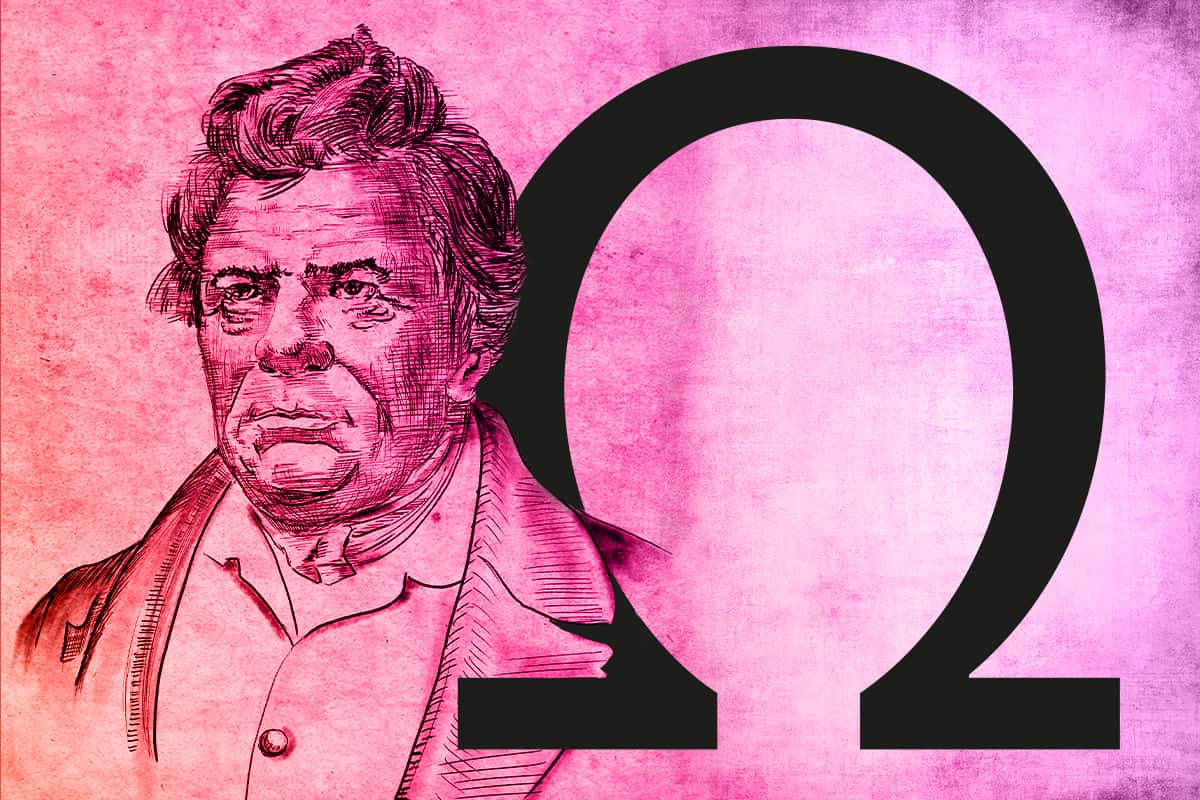
Leave a Comment
Comments (7)
C
Chifuyuu lawliet
Çok iyi, çok teşekkür ediyorum:))
o
omar
projem çok kolay bitti (:
Z
Zeki
İsaac Newton doğmasaydı onun yerine doğacak bir bilim adamı ondan daha fazlasını yapıp günümüzde iklim,açlık, nüfusun artması vb gibi binlerce sorunu önlemi alacak olması çok daha güzel olabilirdi.Bu düşüncemi Newton'a saygısızlık olarak görülmemesi dileğiyle..
J
Jennie
Çok iyi
Aydem Perakende
Merhaba,
İlginiz için teşekkür eder, keyifli okumalar dileriz. 😊
J
Jennie
Teşekkür ederim sizin sayenizde proje ödevimi çok rahat bir şekilde yaptım
A
Azra
Çok güzel bir yazı matematik proje ödevimde bana çok yardımcı oldu bu yazıyı yazana teşekkürlerimi iletiyorum
T
Taha
Çok güzel